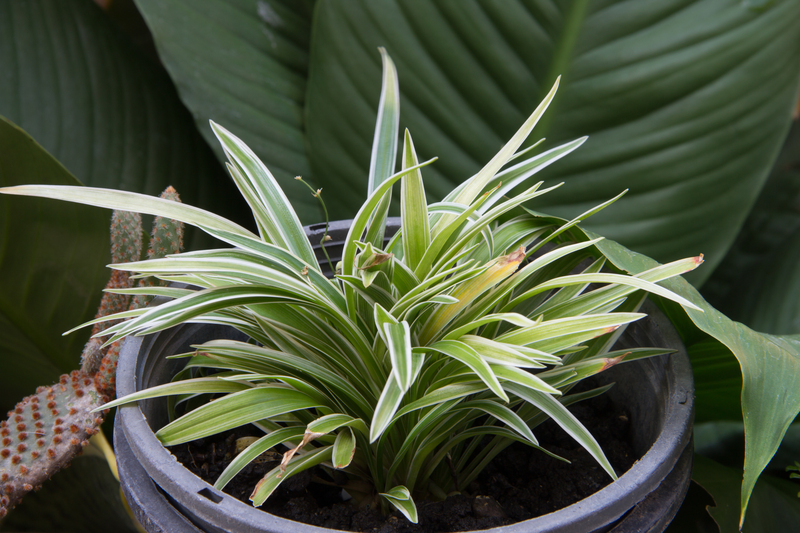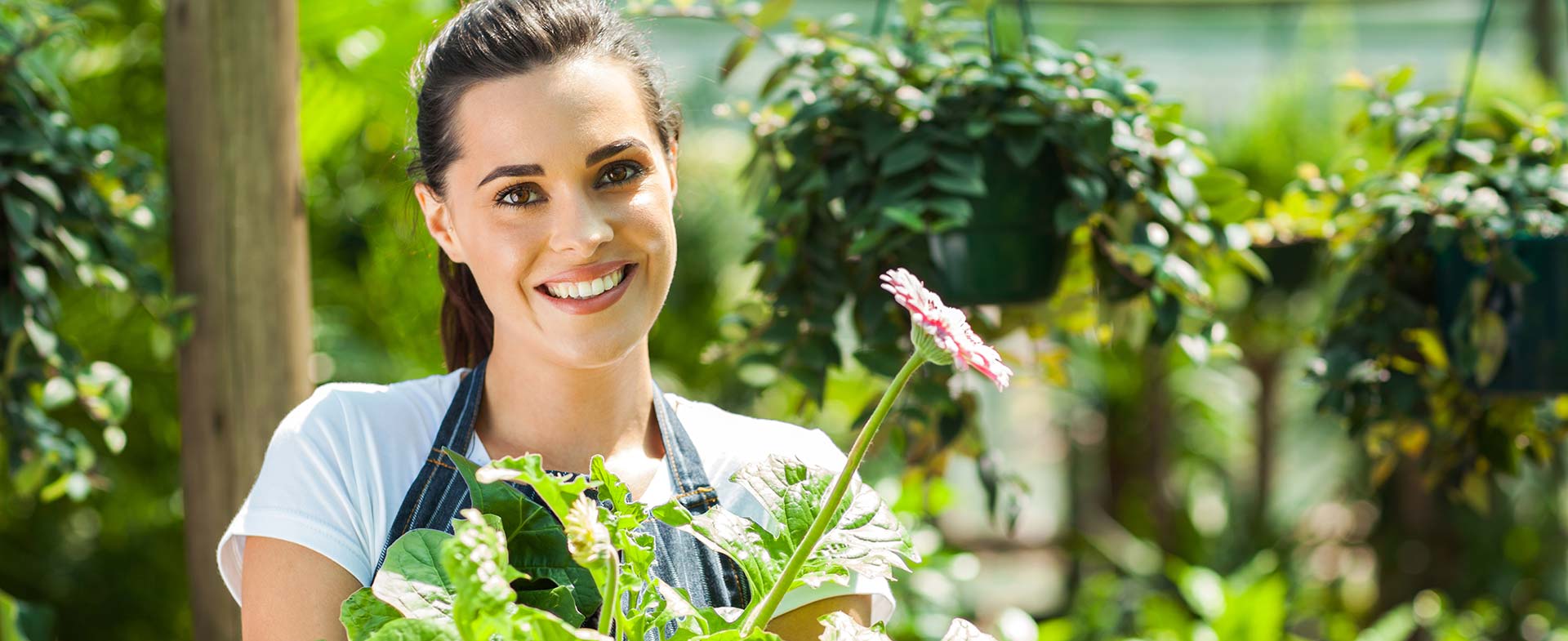Unlocking the Potential of Container Gardening Techniques
Posted on 09/09/2025
Unlocking the Potential of Container Gardening Techniques
Container gardening is not just a trend; it's a game-changer for plant enthusiasts and urban dwellers alike. In the past, gardening was confined to sprawling backyards and open spaces. But with innovative container gardening techniques, even those with limited space can grow lush, productive gardens. In this in-depth guide, we'll explore the magic of container gardening and reveal actionable tips for successfully cultivating your own vibrant oasis--no matter where you live.
What Is Container Gardening?
Container gardening involves growing plants in pots, tubs, or other containers instead of planting them directly in the ground. This modern method allows gardeners to maximize small spaces and create versatile plant displays both indoors and outdoors.
- Flexibility: Move your containers to get the best light or weather protection.
- Diversity: Grow vegetables, herbs, flowers, and even small trees.
- Accessibility: Great for beginners, urbanites, and those with limited mobility.
Why Is Container Gardening So Popular?
With rising urbanization, more people are seeking creative ways to bring greenery into their homes. The container garden offers:
- Space Efficiency: Perfect for balconies, patios, rooftops, and windowsills.
- Control Over Soil and Water: Design the ideal environment for each plant--no need to worry about poor native soil.
- Ease of Maintenance: Reduce weeds and make plant care more manageable.
Whether you want to grow your own food or simply beautify your surroundings, learning the secrets of container gardening is your key to success.

Essential Container Gardening Techniques
Unlocking the full potential of container gardening requires more than just placing plants in pots. Understanding the best practices will ensure your mini-garden thrives year-round.
1. Selecting the Best Containers
The heart of container gardening lies in picking the right container. Consider these factors:
- Material: Options include clay, plastic, ceramic, metal, and wood. Each has advantages for different climates and plants.
- Size: Bigger containers offer more room for root growth and reduce the need for frequent watering.
- Drainage: Ensure pots have drainage holes to prevent waterlogging, which can lead to root rot.
- Shape: Tall containers are better for deep-rooted plants, while wide, shallow pots suit herbs and succulents.
2. Preparing the Ideal Potting Mix
Garden soil is too heavy and can bring pests to your containers. Instead, use a high-quality potting mix that is:
- Lightweight and Well-Draining
- Rich in Organic Matter
- Free from Weeds and Diseases
- Resistant to Compaction
Mix in compost, perlite, or vermiculite to provide extra nutrients and enhance drainage for your container garden plants.
3. Strategic Plant Selection
While almost any plant can be grown in a container, some choices are better suited than others. Select plants that:
- Are compatible in terms of water and light needs
- Have root systems appropriate for your container depth and width
- Include compact or dwarf varieties for ease of management
Popular container gardening plants include tomatoes, peppers, lettuce, basil, lavender, petunias, and dwarf fruit trees.
4. Optimizing Sunlight and Placement
Sunlight is vital for healthy growth. Remember these tips:
- Most vegetables and herbs need at least 6 hours of direct sunlight daily.
- Container gardens on wheels or stands can be turned to chase the sun throughout the day.
- Use shade-tolerant varieties like ferns or hostas for less sunny spots.
5. Watering Techniques for Container Gardens
Container plants dry out more quickly than those planted in the ground. Follow these watering practices:
- Check soil moisture regularly--water when the top inch is dry.
- Use self-watering pots or drip irrigation for consistent hydration.
- Group containers by watering needs to streamline care.
Tip: Morning watering helps prevent disease and reduces evaporation.
6. Fertilizing for Healthy Growth
Potted plants quickly exhaust nutrients in their soil. Fertilize to keep them thriving:
- Mix slow-release granular fertilizer into the soil at planting time.
- Supplement with water-soluble fertilizer every 2-4 weeks during active growth.
- Choose an organic fertilizer for edible crops.
7. Pruning and Plant Care
Regular upkeep will help your container garden look its best. Remember to:
- Pinch back leggy growth to encourage bushiness
- Trim dead leaves and spent flowers
- Monitor for pests and diseases, treating as needed
Popular Container Gardening Techniques and Styles
Once you grasp the basics, you can experiment with a variety of creative styles. Unlock the full potential of your space with these innovative approaches.
Vertical Container Gardening
Perfect for tight quarters, vertical gardening stacks containers on walls or frames. This maximizes growing space and adds a dynamic visual element.
- Use wall-mounted planters, tower gardens, or recycled pallets.
- Grow cascading flowers, trailing vines, or strawberries.
Hanging Gardens
Suspending pots from hooks or railings creates a lush, floating effect. This is especially effective with colorful blooms or trailing herbs like thyme and oregano.
Themed Container Gardens
Design containers around a theme to personalize your garden:
- Mediterranean: Olives, rosemary, lavender, lemon trees
- Pepper Patch: Grow several varieties of chili and sweet peppers in one large tub
- Pollinator Haven: Attract bees and butterflies with a mix of flowering annuals
Edible Container Gardens
Harvest your own produce with container vegetable gardening. Tomatoes, salad greens, radishes, carrots, and strawberries all excel in containers. Group herbs for a windowsill kitchen garden, or add dwarf fruit trees to a sunny balcony.
Succulent and Cactus Arrangements
The hardy nature of succulents and cacti makes them ideal for low-maintenance container gardens. Their diverse shapes and colors create eye-catching displays, especially in decorative shallow bowls or troughs.
Common Challenges and Solutions in Container Gardening
Like any gardening method, container gardening comes with unique hurdles. Here's how to overcome the most frequent problems:
1. Overwatering or Underwatering
Improper watering is the main cause of failure in container gardening. Always check moisture before watering and use pots with drainage holes. If you travel often, consider self-watering pots or ask a friend to help maintain your plants.
2. Root Bound Plants
Plants grow surprisingly fast in containers and can outgrow their homes. If you notice slowed growth or roots circling the pot, it's time to repot into a larger container. Gently tease roots apart before replanting for healthy development.
3. Soil Nutrient Depletion
Container soils can lose fertility with repeated watering. Refresh the top few inches of soil with compost or repot annually with fresh potting mix to replenish nutrients.
4. Pests and Disease
Inspect plants often. Container gardens can be susceptible to aphids, spider mites, and fungal diseases. Use organic sprays or neem oil to treat pests. Good air circulation and clean containers help prevent problems.
Tips for Sustainable Container Gardening
Modern container gardening isn't just about convenience--it can also be highly sustainable. Follow these eco-friendly practices:
- Reuse Containers: Repurpose old buckets, bins, or even shoes as whimsical planters.
- Compost: Turn plant debris and kitchen scraps into rich compost to boost soil health.
- Water-Wise Practices: Collect rainwater in barrels for eco-friendly irrigation.
- Native Plants: Choose species adapted to your local climate to minimize water and fertilizer use.
Going Organic in Your Container Garden
For those growing edibles, particularly herbs and vegetables, think organic. Use certified organic potting mixes and fertilizers to ensure what you harvest is free from harmful chemicals. Companion planting--growing beneficial plants together--can also boost productivity and deter pests naturally.

Creative Ideas to Expand Your Container Garden
If you've mastered the basics, it's time to get creative. Here are ways to make your container gardening experience unique and rewarding:
- Mix and Match: Combine flowers, foliage, and edibles in one large container for a culinary and visual treat.
- Seasonal Rotations: Change out plants seasonally--think spring bulbs, summer veggies, autumn mums, and winter evergreens.
- Miniature Gardens: Create fairy gardens or bonsai displays for fun, whimsical effects.
- Herb Spirals: Arrange herbs in a spiral-shaped container for both beauty and utility.
Conclusion: Unlocking Your Gardening Potential
Container gardening techniques have unlocked new possibilities for gardeners everywhere. Whether you have an expansive patio or a tiny windowsill, you can harness the joy and benefits of growing your own plants. From selecting the right container and soil to exploring creative designs, container gardening can transform any space into a vibrant sanctuary.
Remember:
- Experiment with plant combinations
- Adopt eco-friendly methods
- Stay attentive to your plants' changing needs
By unlocking the potential of container gardening techniques, you not only fill your home with greenery but also enrich your life in ways that go far beyond the garden itself. Start small, dream big--and happy gardening!

